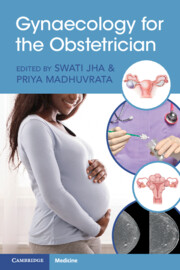Book contents
- Gynaecology for the Obstetrician
- Gynaecology for the Obstetrician
- Copyright page
- Dedication
- Contents
- Contributors
- Foreword
- Preface
- Chapter 1 Ovarian Cysts in Pregnancy
- Chapter 2 Fibroids in Pregnancy
- Chapter 3 Cervical Abnormalities in Pregnancy
- Chapter 4 Vulval Disorders in Pregnancy
- Chapter 5 Congenital Uterine Malformations and Vaginal Anomalies
- Chapter 6 Vaginal Prolapse and Previous Prolapse Surgery
- Chapter 7 Urinary Tract Problems in Pregnancy
- Chapter 8 Previous Third and Fourth Degree Tears
- Chapter 9 Management of Post-Partum Retained Placental Remnants
- Chapter 10 Gestational Trophoblastic Disease (GTD)
- Chapter 11 Female Genital Mutilation
- Chapter 12 Ovarian and Cervical Malignancy in Pregnancy
- Chapter 13 Post-Partum Contraception
- Chapter 14 Pregnancy Associated Breast Cancer
- Index
- References
Chapter 13 - Post-Partum Contraception
Published online by Cambridge University Press: 14 July 2023
- Gynaecology for the Obstetrician
- Gynaecology for the Obstetrician
- Copyright page
- Dedication
- Contents
- Contributors
- Foreword
- Preface
- Chapter 1 Ovarian Cysts in Pregnancy
- Chapter 2 Fibroids in Pregnancy
- Chapter 3 Cervical Abnormalities in Pregnancy
- Chapter 4 Vulval Disorders in Pregnancy
- Chapter 5 Congenital Uterine Malformations and Vaginal Anomalies
- Chapter 6 Vaginal Prolapse and Previous Prolapse Surgery
- Chapter 7 Urinary Tract Problems in Pregnancy
- Chapter 8 Previous Third and Fourth Degree Tears
- Chapter 9 Management of Post-Partum Retained Placental Remnants
- Chapter 10 Gestational Trophoblastic Disease (GTD)
- Chapter 11 Female Genital Mutilation
- Chapter 12 Ovarian and Cervical Malignancy in Pregnancy
- Chapter 13 Post-Partum Contraception
- Chapter 14 Pregnancy Associated Breast Cancer
- Index
- References
Summary
Fertility and sexual activity return quickly following childbirth. One in 13 women requesting an abortion have conceived within a year of a previous birth and interpregnancy intervals of less than 12 months are associated with adverse pregnancy outcomes. Childbirth is a key reproductive event and an opportunity to improve equitable access to effective contraception including long-acting reversible contraception (LARC). An antenatal discussion and plan for post-partum contraception should be recorded for all women and the chosen method provided immediately after delivery where desired by the individual and when safe to do so. All methods are safe to start immediately post-partum except combined hormonal contraception because of the risk of venous thromboembolism (VTE). All clinical staff caring for pregnant women should be able to discuss and provide immediate post-partum contraception. Primary care, secondary care and community sexual and reproductive health (SRH) services should work collaboratively to overcome the organisational and educational challenges involved.
- Type
- Chapter
- Information
- Gynaecology for the Obstetrician , pp. 134 - 145Publisher: Cambridge University PressPrint publication year: 2023



